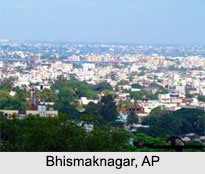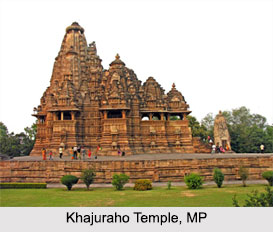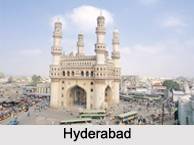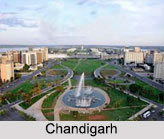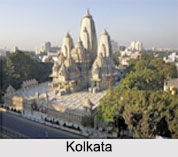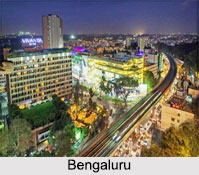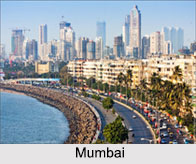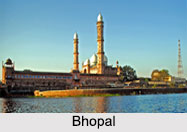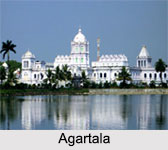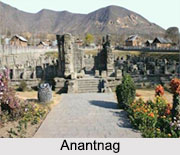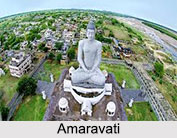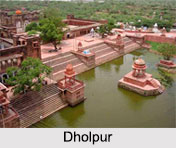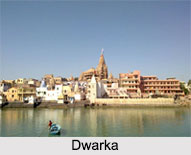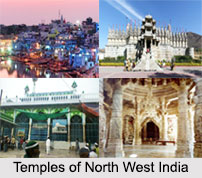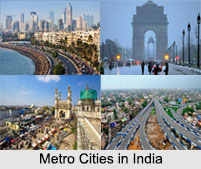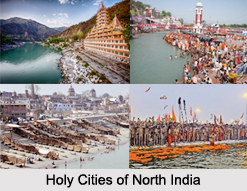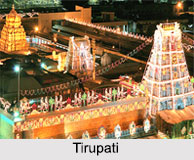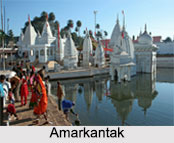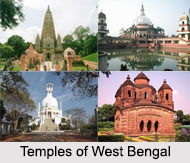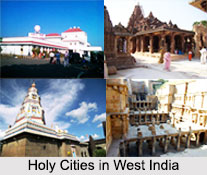Introduction
Nainital is a town in the Indian state of Uttarakhand.
It is also divisional Headquarter of Kumaon Division of Uttarakhand State.
Nainital is an ideal lake resort which rises to a height of nearly 1,938 metres
or 6,358 feet above the sea level. It is placed in the midst of a valley, which
contains a ‘pear-shaped lake’, with a perimeter of nearly 2 miles. Nestled in
the lap of the central Himalaya Mountains, Nainital belongs to
the Kumaon region. Naina (2,615 m (8,579 ft)), Deopatha (2,438 m (7,999 ft))
and Ayarpatha (2,278 m (7,474 ft)) are some of the places surrounding the
Nainital lake. Climate of Nainital is quite soothing.
Location of Nainital
Nainital is nestled in the Kumaon foothills of the outer Himalayas. The hill station lies at a distance of 276 km from Dehradun, the state capital, and 314 km from New Delhi, the capital of India. Perched at an altitude of 1,938 meters above sea level, the town is set in a picturesque valley surrounding an eye-shaped lake, approximately two miles in circumference. It is encircled by towering mountains, with Naina Peak (8,579 ft) to the north, Deopatha (7,999 ft) to the west, and Ayarpatha (7,474 ft) to the south. From the higher peaks, visitors are treated to breathtaking panoramic views.
Mythology Related to Nainital
Popular myths is commonly related to Nainital`s origin. In Indian mythology, the Naina Devi Temple in Nainital is regarded as one of the 51 Shakti Peethas. Moreover in the Manas Khand of the Skanda Purana, Nainital Lake is known as Tri-Rishi-Sarovar, which provides hint of the story of the three sages (or rishis). They are namely Pulastya, Atri, and Pulaha. It is believed that when they did not find water in Nainital, they dug a huge hole at the site where this lake is presently located and filled it with water which has been brought from the sanctum lake of Tibet namely Manasarovar. If one takes a dip into this Naina Lake one can get the same effect as they would from holy Manas sarovar.
Naini Lake is linked to the legend of Goddess Sati's demise. According to mythology, after Sati’s death, Lord Shiva, overcome with grief, carried her body and wandered across the universe, lost in memories of their time together. To restore balance, Lord Vishnu used his Sudarshana Chakra to cut her body into 51 pieces, which fell to Earth and became sacred sites where devotees could honor the Goddess. The spot where Sati’s right eye (or Nain) is said to have fallen is now known as Nain-tal, or the “Lake of the Eye.” Today, the goddess Shakti is worshipped at the Naina Devi Temple, also known locally as Naini Mata Temple, situated on the northern shore of the lake.
History of Nainital
Nainital has historically been part of the Kumaon region.
After the Katyuri Dynasty's fall in the 10th century, Kumaon fragmented into
small princely states, with Nainital under various Khasiya rulers. The Chand
dynasty later consolidated power, but Nainital was among the last areas
absorbed. Trilok Chand built a fort in Bhimtal in the 13th century, though
Nainital remained outside Chand rule. Kirat Chand (1488–1503) finally secured
control over the region. In 1560, Khasiya chiefs briefly reclaimed independence
under a leader from Ramgarh
but were ruthlessly subdued by Balo Kalyan Chand, solidifying Chand dominance
over Nainital.
The Kumaon
Hills cae under British rule after the Anglo-Nepalese War (1814–16).
Nainital was founded in 1841 when P. Barron, a sugar trader from Shahjahanpur,
built the first European house, Pilgrim Lodge. Impressed by its beauty, he
described it as the best site he had seen in his 1,500-mile trek across the
Himalayas. By 1846, houses were rapidly emerging, with settlements on forested
slopes and near the lake. St. John’s Church (1846) was among the first
buildings. Nainital soon became a popular health resort for British soldiers
and officials, later serving as the summer residence of the United Provinces’
governor.
Climate in Nainital
Nainital has a subtropical highland climate influenced by
its elevation. Winters
are relatively dry, while summers are wet due to the South Asian monsoon.
November sees the least rainfall, with 7.9 mm, while July receives the highest,
at 725 mm. Summers are mild, with July being the hottest month, while January
is the coldest. Winter lasts from mid-November to mid-March, with temperatures
steadily dropping from November onward. Summers arrive earlier than in the
plains and are long and humid. Monsoon begins by mid-May and lasts until
mid-October, bringing heavy rainfall due to Nainital’s proximity to the
Himalayas.
Flora and Fauna in Nainital
The region surrounding Nainital, located in the middle
Himalayan ranges boasts rich biodiversity with temperate flora and
fauna. The area is home to a variety of trees and shrubs, including Banj oak,
Pangar or horse chestnut, walnut, hill pipal, ash tree, chinar, hisalu, musk
rose, kilmora, Himalayan cypress, Rhododendron arboreum or buruns, deodar,
weeping willow, and pine.
The lake itself supports a range of aquatic plant life, including Potamogeton pectinatus, Potamogeton crispus, Polygonum glabrum, Polygonum amphibium, and Polygonum hydropiper (water pepper). Fish species in the lake include Mahseer and mirror carp, which breed multiple times between May and September. Two types of Mahseer, the red-finned (Tor tor) and yellow-finned (Tor putitora), grow between 20 to 60 cm. The lake also harbors three species of hill trout, namely- Schizothorax sinuatus, Schizothorax richardsoni, and Schizothorax plagiostornus. Additionally, mirror carp (Cyprinus carpio) and Gambusia affinis (mosquitofish) have been introduced, the latter as a biocontrol measure against mosquito larvae.
Tourism in Nainital
Being a popular hill station, Nainital receives visitors almost throughout the year. Most important places to visit are the Naini Lake or the Tririshi Lake. For the amusement of tourists special boating facilities are available. The Cheena Peak or the Naina Peak is the other captivating place. The snow-clapped mountain ranges of Himalayas and the Nainital Valley are also popular among the tourists. Besides, there is Hanumangarh temple for devotees to explore. One can offer prayer and also enjoy the sunset from the temple premises.
There are other attractions of Nainital as well. The north end of Naini Lake, an attractive locale, is popularly known Mallital. Southern end is called Tallital which has a bridge. It is famous as Danth that house the statue of Mahatma Gandhi and a post office. On the northern shore of the Naini Lake, stands the Naina Devi Temple. Although it was dilapidated in the year 1880 due to a landslide it was rebuilt in the later period. St. John Church is another place of interest in Nainital. The church, established in 1844, is one of the ancient buildings of the place. It has derived its name from Daniel Wilson, the then Bishop of Kolkata. It was he who laid the foundation of this church.
Governor’s House, better known as Raj Bhavan, is a landmark of Nainital. Previously it was called Government House. It was founded in the year 1899. Famous architect F.W. Stevens planned its design in the Victorian Gothic style. This majestic edifice comprises of a 2-storied house with near about one hundred and thirteen rooms, a huge garden, golf links and a swimming pool. The snow view of the Nanda Devi is another beautiful sight for the tourist. It rises to a height of nearly 2,270 m or 7,448 ft above the sea level. On clear day, Nainital treats the tourists with the spectacles of the snow clapped lofty Himalayan Mountains like Trisul Mountains, Nanda Devi, and Nanda Kot.
In the sprawling open area there is Govind Ballabh Pant High Altitude Zoo. This is a place of interest, which lies at a distance of nearly 1 km away from the bus stand. It rises to a height of near about 2100 meters with extensive open space area. The zoo is a haven for animals like Leopard, monkeys, Himalayan black bear, Siberian Tiger, Palm civet cat, Wolf, Silver Pheasants, Rose ringed Prakeet, Ghoral, Hill Fox, Sambhar, Barking Deer. The zoo is closed for public viewing on Monday every week. Besides on all the National holidays and also on festivals like Holi and Diwali no one is allowed to visit the zoo. In the recent times Caves Garden has drawn the admiration of tourists who visit Nainital, Uttarkhand. It is positioned in Sukha Tal, which is almost 1 Km from Mallital lying close to Kumaun University Campus.
The Nainital Zoo, officially named G.B. Pant High Altitude Zoo, is located in Tallital on Sher Ka Danda Hill at an elevation of 2,100 meters (6,900 feet) above sea level. A popular tourist attraction, it houses several endangered species native to the Himalayas.
The Nainital Yacht Club, run by the Boat House Club, sits along the lake and is India's highest yacht club, ranking among the highest in the world. Established by the British in 1910, it remained exclusive to members until 1970. Today, tourists can enjoy sailing sessions, making yachting a favorite activity in Nainital.
Another notable site is the Jama Masjid, located in Mallital. Built in 1882 during the British era for the local Muslim community, it features Arabic inscriptions above its entrance and a mihrab, a niche indicating the direction of Mecca.
The Mall Road is Nainital’s bustling shopping hub, lined
with shops, restaurants, and street vendors, offering a vibrant experience for
visitors. Other places of interests in the surrounding are Sanjay Park, Cheel
Chakkar,Birla Mandir Peak, Alma Peak, Naukuchiatal. One can reach beautiful
cities in the nearby like Bageshwar District, Almora, Kausani, Pithoragarh District.
